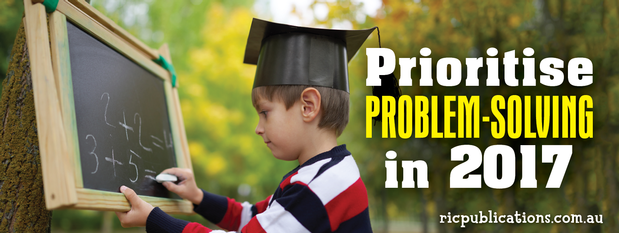- Tuesday 17 January 2017
- 0 Comments
Each year, the Department of Education releases a focus statement that outlines the national priorities for the following year. The central message of the Focus 2017 statement is to accelerate learning success for all students, including ‘Focus on STEM in the early years, particularly numeracy, creative problem-solving and coding skills’.
With an increasing amount of content continually being crammed into the curriculum, teachers often feel that they don’t have time to allow students to develop their understandings using higher-order thinking skills. We often find teachers returning to the old-school ‘chalk and talk’ method simply to cover the content knowledge in the allotted time rather than focusing on life-long skills, such as critical thinking and problem-solving.
Research from the National Council of Teachers of Mathematics states that, ‘To help students become successful problem solvers, teachers must accept that students’ problem-solving abilities often develop slowly, thereby requiring long-term, sustained attention to making problem solving an integral part of the mathematics program’. (J Cai and F Lester)
An effective problem-solving program should provide:
- explicit teaching of the problem-solving process and problem-solving strategies
- time for students to choose, apply and evaluate various strategies
- consolidation and practice opportunities
- time for students to discuss and share the problem-solving strategies they have used and their effectiveness
How can you enrich your mathematics program through problem-solving?
- Solve one problem every day, rather than spending one day solving many problems.
- Ensure problem-solving questions relate to all strands of the Mathematics curriculum, including Number and Algebra, Measurement and Geometry, and Statistics and Probability.
- Before each session, briefly revise the problem-solving process—understand the problem, devise a plan, carry out the plan and check the solution.
- Before each session, briefly revise some problem-solving strategies—find key information, draw a picture/diagram, use manipulatives, find a pattern, make a list, make a table/chart, write an equation, simplify the problem, work backwards or guess, check and improve. (Note: Students should be encouraged to develop their own strategies and refine any that were not effective at solving the problem.)
- After each session, students should share and explain the strategy they used to solve the problem.
Problem-solving questions should be:
- real-life problems that students may encounter in their everyday lives
- engaging and motivating for the students to want to solve
- challenging problems that have no obvious solution (single- or multi-step problems)
- able to be solved using different strategies
How can R.I.C. Publications help?
Register your interest in our new Problem-solving strategies and skills box, which covers all aspects of Australian Curriculum Mathematics.

